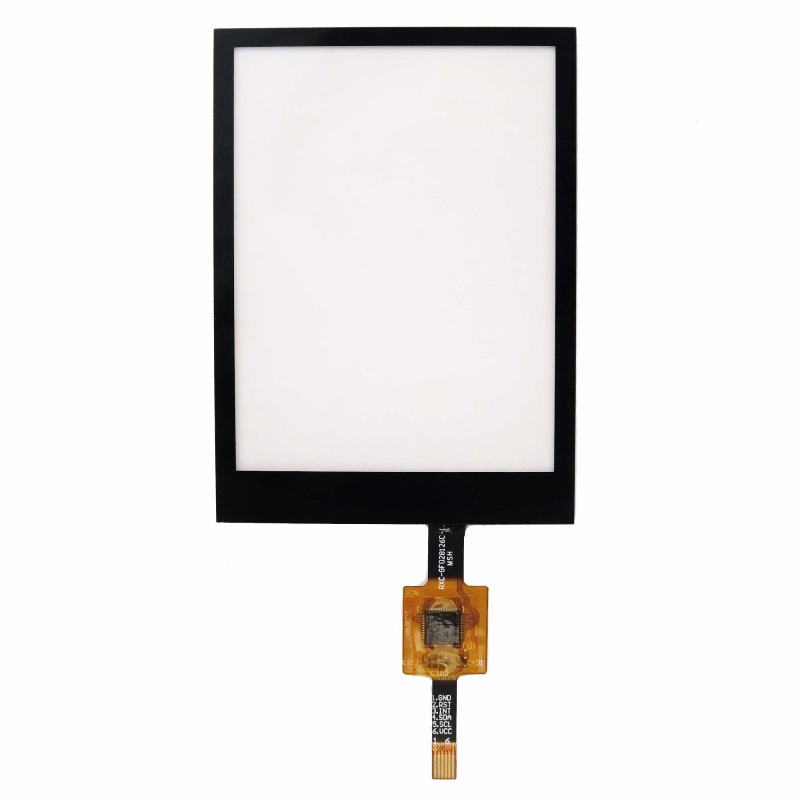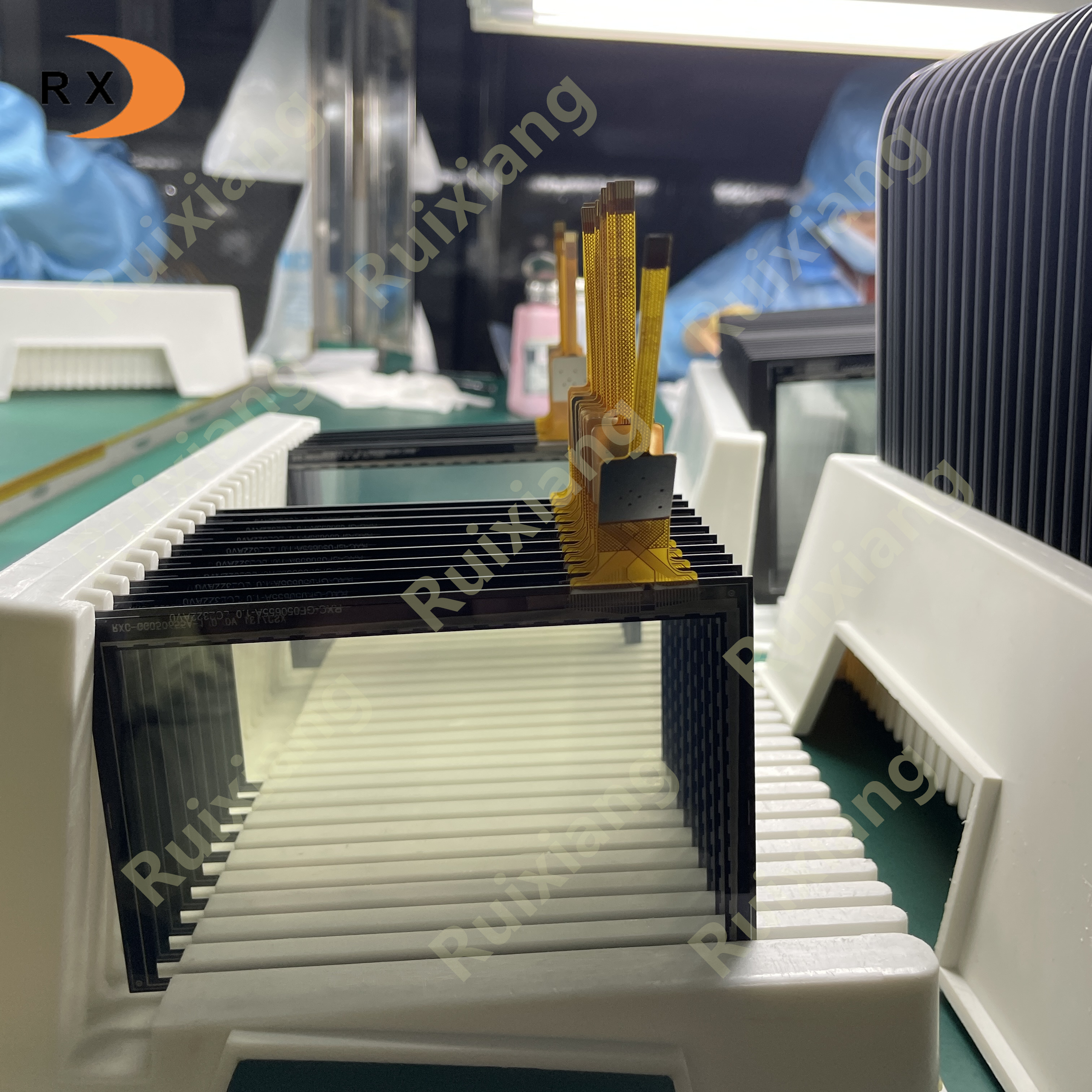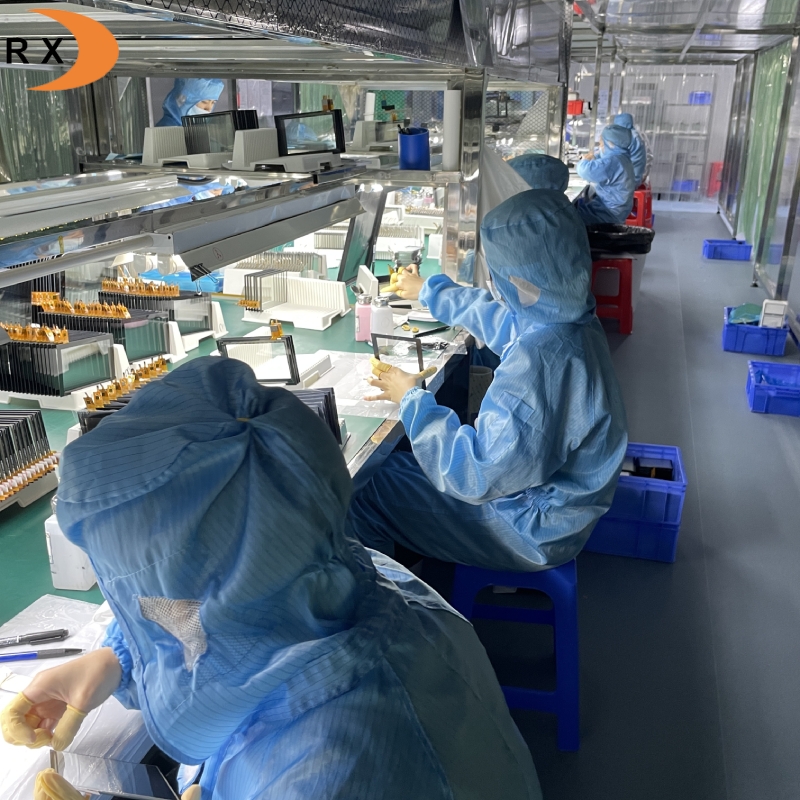### The role of optical bonding in enabling LCD manufacturers to enhance multi-touch screens
In the rapidly evolving technology landscape, LCD manufacturers are constantly seeking innovative solutions to enhance the performance and usability of their products. Optical bonding is one such advancement, and it's becoming increasingly important in the production of multi-touch screens. This article will delve into the importance of optical bonding, the benefits it offers LCD manufacturers, and how it enhances the functionality of multi-touch screens.
#### Understanding Optical Bonding
Optical bonding is a complex process that involves bonding the cover glass or touchscreen to a liquid crystal display (LCD). The technology uses materials such as optically clear adhesive (OCA) or optically clear resin (OCR) to fill the gaps between the layers, creating a seamless interface. The result is a display that not only looks better but also performs better in a variety of lighting conditions.
The adhesive used in optical bonding is completely transparent, ensuring durable structure and color. This durability is crucial for LCD manufacturers striving to produce high-quality multi-touch screens that can withstand the rigors of daily use. By eliminating air gaps, optical bonding significantly reduces reflections and improves display clarity, making it a must-have process for any quality-conscious LCD manufacturer.
#### Benefits of Optical Bonding for LCD Manufacturers
1. **Improved visibility in bright environments**: One of the key benefits of optical bonding is its ability to improve visibility outdoors or in high ambient light conditions. This is particularly important for LCD manufacturers, as many applications, such as outdoor handheld devices, navigation systems, industrial and medical displays, and ATM devices, require clear visibility in sunlight or bright environments. Optical bonding ensures that users experience less eye fatigue when operating multi-touch screens, thereby enhancing the user experience.
2. **Enhanced Touch Sensitivity**: Optical bonding also helps improve touch sensitivity. By eliminating air gaps, the touchscreen can respond more accurately to user input. This is particularly beneficial for multi-touch screens, which can receive multiple inputs simultaneously. LCD manufacturers can use this technology to create devices that are not only responsive but also intuitive to use.
3. Improved Durability: The bonding process enhances the overall durability of the display. With no air gaps, the risk of dust and moisture infiltration is significantly reduced. This is particularly important for industrial and medical equipment, where reliability is paramount. LCD manufacturers can assure customers that their multi-touch screens will last, even in harsh environments.
4. **Reduced Weight and Thickness**: Optical bonding also reduces the overall weight and thickness of the display. By combining the layers into a single unit, LCD manufacturers can create sleeker devices that are easier to handle and transport. This is particularly beneficial in the consumer electronics market, where portability is a key selling point.
5. Cost-Effectiveness: While the initial investment in optical bonding technology may be higher, its long-term benefits can save LCD manufacturers money. The enhanced durability and performance of multi-touch screens can reduce warranty claims and returns, ultimately improving product line profitability.
#### Application of optical bonding in multi-touch screens
Optical bonding technology is versatile and has a wide range of applications. LCD manufacturers can apply this technology to various areas, including:
- **Outdoor Handheld Devices**: Devices such as smartphones and tablets benefit greatly from optical bonding as it enhances visibility and touch sensitivity in bright outdoor conditions.
- Navigation Systems: Vehicle navigation systems require displays that are easy to read and interact with while driving. Optical bonding ensures these systems remain functional and user-friendly in all lighting conditions.
Industrial Displays: In industrial settings, displays are often exposed to harsh environments. Optical bonding technology provides the durability required for these applications, ensuring multi-touch screens can withstand the rigors of the workplace.
Medical Displays: Reliability and clarity are crucial in the medical field. Optical bonding technology enhances the performance of medical displays, enabling medical professionals to effectively interact with multi-touch screens.
- **ATM Equipment**: For ATMs, clear visibility and touch sensitivity are crucial for user interaction. Optical bonding technology ensures these machines remain functional and user-friendly even in brightly lit environments.

Welcome customers with needs to find us!
E-mail: info@rxtplcd.com
Mobile/Whatsapp/WeChat: +86 18927346997
Website: https://www.rxtplcd.com

#### Case Study: 2.8-inch Capacitive Touchscreen
To illustrate the advantages of optical bonding, we'll use a 2.8-inch capacitive touchscreen (model RXC-GF028126A) as an example. This multi-touchscreen uses a P+G structure, with touchscreen outer dimensions (TP OD) measuring 49.8 x 68.7 x 0.8 mm and a touchscreen viewable area (TP VA) measuring 44.2 x 58.6 mm.
By incorporating optical bonding technology into touchscreen production, LCD manufacturers can significantly improve their performance. The optical bonding process ensures that the display remains clear and responsive even in challenging lighting conditions. Users benefit from improved visibility and touch sensitivity, making devices more user-friendly and efficient.
#### in conclusion
In summary, optical bonding is a revolutionary process for LCD manufacturers looking to enhance the performance of multi-touch screens. By improving visibility, touch sensitivity, durability, and overall performance, optical bonding technology enables manufacturers to create high-quality displays that meet the needs of a wide range of applications. As technology continues to advance, the importance of optical bonding in multi-touch screen production will become increasingly prominent, and its key position in the LCD manufacturing process will be further consolidated.
For LCD display manufacturers striving to remain competitive in the market, investing in optical bonding technology is not just an option, it's a necessity. By adopting this innovative process, they can ensure their multi-touch screens deliver the performance and reliability that consumers expect in today's fast-paced digital world.



Post time: Aug-11-2025



